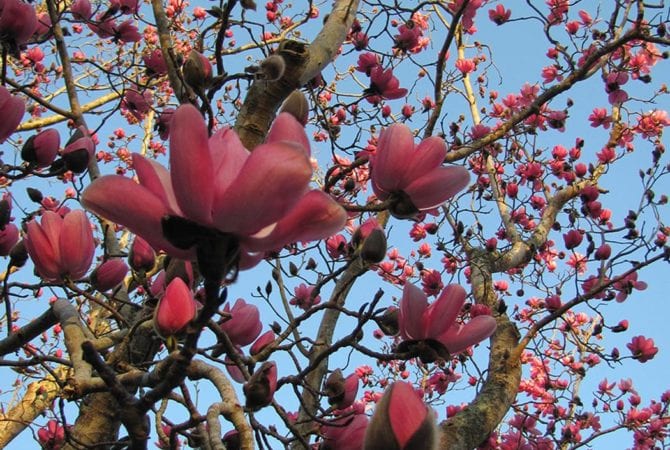The first tea gardens in the UK yielded the first major crop for Britain’s first home-grown tea in 2005, creating the ultimate Britishness in every cup. The world’s first true British tea has been heralded as the ‘new Darjeeling.’
Tregothnan is an expert Camellia grower. In fact, Tregothnan pioneered Camellia into Great Britain over two centuries ago. Camellia has thrived to such an extraordinary extent that the original introductions are now growing into their third century and still look youthful! Tregothnan is now the home of two of the RHS National Collections of Camellia – the Camellia reticulata and Camellia sasanqua.


For those of you that love tea as much as we do, you will know that tea is a type of Camellia – the Camellia sinensis. In the mid-nineties, the gardeners at Tregothnan suspected that because of the success of ornamental Camellia at Tregothnan, that the tea variety might also grow successfully in Tregothnan’s unique environment. Much research was undertaken including trips to tea regions around the world such as Darjeeling in India and Japan to understand more about the processes and pitfalls of growing and harvesting the precious leaves. Head Gardener, Jonathon Jones, completed a Nuffield Scholarship on the subject and then in 1999 the very first British tea bushes were planted.
The kitchen garden site was specified as the best place to trial this tricky crop – one side protected by the high wall of the ancient garden, the other side protected by the thick shrubby characteristics of Tregothnan’s Manuka bushes. After a few false starts, (early spring storms uprooted the first baby bushes and swept them up and over the garden wall!) the first 300 bushes took root in the Kitchen Garden. Once past the first difficult few years, tea production becomes a lot easier, but it was soon clear that many more bushes would be needed for a credible tea business – the first harvest in 2005 yielded just 28 grams of tea! The world’s first true English tea was heralded as the ‘new Darjeeling’.
Twenty years later and we have learnt a great deal since those early days of tea production. Now up to 20,000 tea bushes are planted every year, in new tea garden areas across the wider estate in Cornwall. Out of 1,000 acres, only 150 meet these criteria, making this a small player on the global tea market. To counter limitations of scale, Tregothnan is positioned as a luxury tea brand.


In part we thank the true and unique micro-climate for the success of our tea gardens; the similar climate that makes Cornwall the richest garden county of Europe. The 18 metre deep sea creek is almost seven miles inland from Falmouth as it bathes the gardens in mist and relative warmth in the winter. Thurston wrote of our climate in the 19th century that we do not have a winter, merely a languid spring. We soon learned that there is a big difference between a tea bush being alive and slowly growing in many areas of the UK to the highly productive tea gardens of Tregothnan estate. Today we supply our hardiest selections for different growing conditions and since 2002 have supplied some tough plants for determined enthusiasts in Scotland and Northern England. Although the loss rate in colder regions is high and the bushes are largely unproductive it is a tribute to the nation of tea drinkers and gardeners that the efforts continue.
Here at Tregothnan our Cornish Tea Bushes luxuriate in conditions that are often warmer than Darjeeling in India and free from salt winds and other hazards that afflict coastal regions. The flora around the tea includes the famous pink Magnolia campbellii that itself was introduced from Darjeeling and often heralds spring in Cornwall before it arrives in Darjeeling!
The very first blend we released in 2005 was our best-selling Classic blend. Today, the range extends to many black teas including our exclusive Single Estate, one Green Tea and a growing list of home-grown herbal infusions. We are proud to be the only producer actually growing tea in the England, putting English into English tea.

